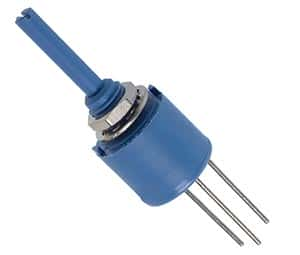Potentiometer Basics
A potentiometer is a manually variable resistor. It has 3 terminals, one of which is connected to ground, the second to a current source and the third to a sliding contact that runs along a strip of resistor. The varying resistance is used to control other parameter like volume. Potentiometers are widely used electronic components used in volume control, brightness control etc. though recently they are being replaced by digital control circuits.
A potentiometer can regulate the amount of current flow in a circuit. In this case, the maximum current flow is limited by the resistivity of the variable resistor. The variable resistor can be in the form of a linear strip or a circular strip. In a linear potentiometer, the cross section of the resistor is constant and the resistance varies directly with the length of the resistor. In a logarithmic potentiometer, the resistor tapers from one end to the other and the cross section varies likewise. The variation of current flow is logarithmic in this case and is used in audio amplifiers.
 A digital potentiometer is digital equivalent of variable resistor potentiometer. It is a digitally controlled electronic component with built in IC or a digital to analog converter. It is widely used in instrumentation amplifiers. It has limitation of being restricted to currents of a few milli amperes and voltage in the 0 to 5V range.
A digital potentiometer is digital equivalent of variable resistor potentiometer. It is a digitally controlled electronic component with built in IC or a digital to analog converter. It is widely used in instrumentation amplifiers. It has limitation of being restricted to currents of a few milli amperes and voltage in the 0 to 5V range.
